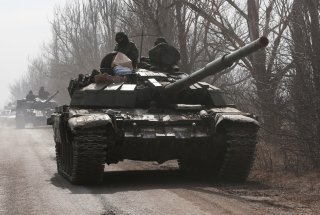Kyiv’s Trilemma: Possible Settlements to the War in Ukraine
Although Putin shows no signs pursuing diplomatic “off-ramps,” this does not mean that the West is powerless to shape the conflict’s trajectory.
There remain several powerful escalatory options in the economic realm that the West has yet to exercise, including full blocking sanctions against more of Russia’s banks and ending the purchase of Russian energy by Europe. These measures will incur costs for America and its allies, but they remain the best way to force Putin—however unwillingly—to sit down at the negotiating table.
Additionally, the United States must ensure that the Ukrainian military and people are fully equipped to resist Russia’s onslaught indefinitely. This means massive infusions of humanitarian and economic aid to help the civilian population, as well as continued supplies of anti-tank, anti-aircraft, and anti-missile weaponry that will allow Ukraine to at least fight Russia to a stalemate, if not an outright victory.
Not since World War II have the stakes been higher for European security and the global order of sovereign nations. Whenever Putin is finally forced to come to the negotiating table and look for a way out of his self-induced quagmire, the United States must ensure that he has no choice but to settle according to the terms set by Ukraine and its transatlantic partners.
Robert Person is an associate professor of international relations at the United States Military Academy and director of West Point’s International Affairs curriculum. He holds a Ph.D. in political science from Yale University and a MA in Russian, East European, and Eurasian Studies from Stanford University. Dr. Person is a term member at the Council on Foreign Relations and a faculty affiliate at West Point’s Modern War Institute. His next book, Russia’s Grand Strategy in the 21st Century is forthcoming from the Brookings Press (2023). Follow him on Twitter: @RTPerson3
The views expressed in this article are those of the authors and do not represent the official policy or position of the Army, Department of Defense, or United States Government.
Image: Reuters.

